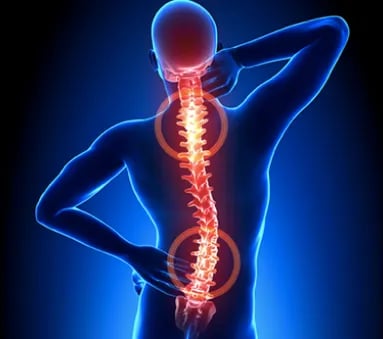Understanding Osteoporosis: The Silent Thief of Bone Strength
Osteoporosis is a progressive bone disease characterized by weakened bones that are more prone to fractures. Often referred to as the "silent thief," osteoporosis typically progresses without noticeable symptoms until a fracture occurs.
HEALTH
3/10/20252 min read


Osteoporosis is a progressive bone disease characterized by weakened bones that are more prone to fractures. Often referred to as the "silent thief," osteoporosis typically progresses without noticeable symptoms until a fracture occurs. Understanding the risk factors, prevention strategies, and treatment options for osteoporosis is crucial for maintaining bone health and reducing the risk of debilitating fractures.
What is Osteoporosis?
Osteoporosis occurs when the density and quality of bone decrease, leading to porous and fragile bones. This weakening of the bone structure increases the risk of fractures, particularly in the spine, hips, and wrists. While osteoporosis can affect individuals of any age, it is more commonly diagnosed in older adults, particularly postmenopausal women, due to hormonal changes and age-related bone loss.
Risk Factors and Causes:
Several factors contribute to the development of osteoporosis, including genetics, hormonal changes, lifestyle choices, and medical conditions. Women are at higher risk, especially after menopause when estrogen levels decline. Other risk factors include a family history of osteoporosis, inadequate calcium and vitamin D intake, sedentary lifestyle, smoking, excessive alcohol consumption, and certain medications.
Prevention and Management:
Preventing osteoporosis begins with lifestyle modifications and proactive measures to maintain bone health. This includes consuming a balanced diet rich in calcium and vitamin D, engaging in weight-bearing exercises, such as walking or strength training, quitting smoking, limiting alcohol intake, and taking steps to prevent falls. For individuals at high risk or with a diagnosis of osteoporosis, medications may be prescribed to slow bone loss and reduce fracture risk.
Early Detection and Diagnosis:
Early detection of osteoporosis is crucial for initiating preventive measures and reducing the risk of fractures. Bone density testing, typically done through a dual-energy X-ray absorptiometry (DEXA) scan, is used to diagnose osteoporosis and assess bone strength. Screening recommendations vary based on age, gender, and risk factors, so it's important to discuss screening options with a healthcare provider.
Living with Osteoporosis:
Living with osteoporosis requires ongoing management and adherence to treatment recommendations. This includes regular monitoring of bone density, taking prescribed medications as directed, maintaining a healthy lifestyle, and taking precautions to prevent falls and fractures. Support from healthcare professionals, as well as educational resources and support groups, can also be valuable for individuals living with osteoporosis.
Osteoporosis is a common and serious condition that affects millions of people worldwide. By understanding the risk factors, prevention strategies, and treatment options for osteoporosis, individuals can take proactive steps to protect their bone health and reduce the risk of fractures. If you have concerns about osteoporosis or are at risk due to age, gender, or other factors, consult with a healthcare provider for personalized guidance and recommendations tailored to your needs.
